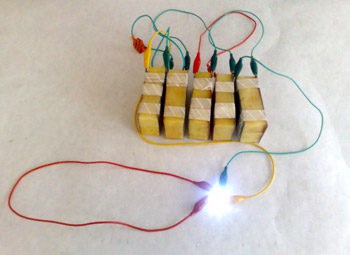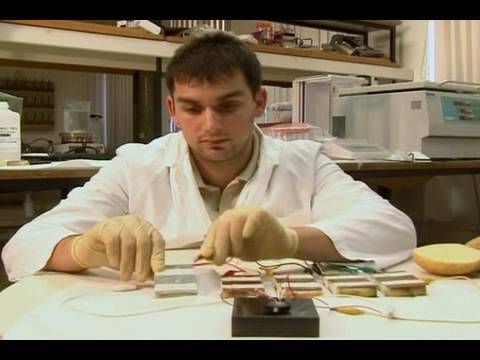The humble potato: the staple of American cuisine, the bane of the Irish monoculture, and the only gluten free vodka that hippies can consume and not feel bad about themselves.
Not much is considered when thinking of this fibrous, bulbous root, except that it pairs well with
dead bird of many variety. However, with its incredible ease of growth, and surprising nutritional value, its real potential is constantly overlooked; relegated to the realm of grease saturated French fries, and KFC bowls.
 However, for much of the world, potatoes provide not only an easy food source, but a necessary nutritional staple to keep sustain its population. But what if potatoes could provide more than the energy from its digestion? What if it could power a computer so a curious teenager in rural Africa could develop valuable skills? What if it could charge a phone deep in the Indian jungle so that a family could communicate with each other throughout the world? How about lights? Or a bunch of other things that we take for granted in the modern era? And what if the potato itself could power designs that make growing more potatoes more efficient?
However, for much of the world, potatoes provide not only an easy food source, but a necessary nutritional staple to keep sustain its population. But what if potatoes could provide more than the energy from its digestion? What if it could power a computer so a curious teenager in rural Africa could develop valuable skills? What if it could charge a phone deep in the Indian jungle so that a family could communicate with each other throughout the world? How about lights? Or a bunch of other things that we take for granted in the modern era? And what if the potato itself could power designs that make growing more potatoes more efficient?
We all remember the potato battery from elementary school, and its inability to keep a digital clock from flickering. In other words, it sucks. It really does. However, there is a simple solution to this, which researcher Haim Rabinowitch and his team at Hebrew University of Jerusalem discovered in 2010: You boil them for 8 minutes, and then wrap them in paraffin wax to preserve them for up to 40 days. Doing so increases the efficacy of the potato by about 10 times, making it 50x cheaper than traditional commercial AA batteries, and 6x cheaper than a kerosene lamp.

There are some caveats though. For instance, how much of the limited potato harvest will be allocated away from food towards energy? Additionally, how much education will be required to make this a reality in areas where people don’t have the political influence necessary to make it happen?
These are all questions that need to be addressed.
However, putting these conditions aside, the potential for this organic technology is nearly limitless. For instance, they could be used to power atmospheric water generators, creating an abundance of water in order to grow additional crops. They could also be used to power pumps, allowing for more effective irrigation. They could also be used to power LEDs, giving people the ability to learn and create things into the wee hours of the night, which we could argue is one of the main reasons innovation has happened at a staggering rate ever since the first filament ignited in the 1800s.
So, we pose this to our community of learners: How do we get over these hurdles? How do we make this a reality? Additionally, what else might be wrong with this design? How can we improve it? Is there a better solution? Because only through active discourse can progress be made.
One Response
Amory
Youre not the average blog writer, man. You definitely have something powerful to add to the web. Your design is so strong that you could almost get away with being a bad writer, but yo728#&1u;re even awesome at expressing what you have to say. Keep up the good work man!